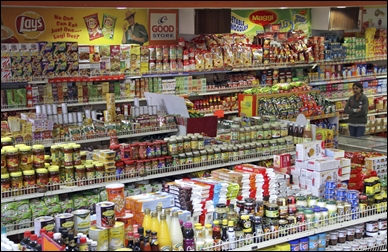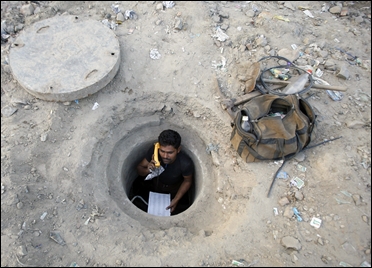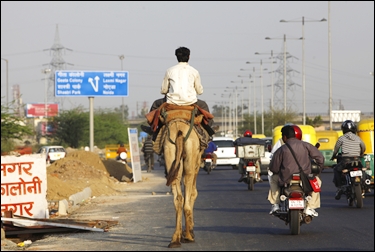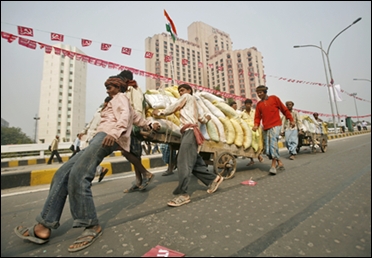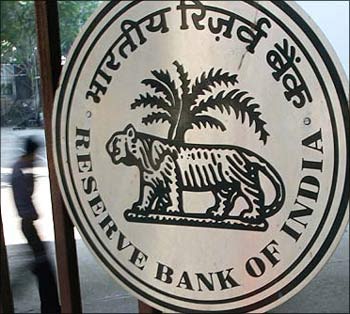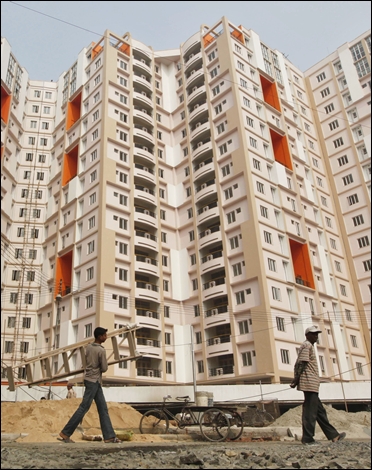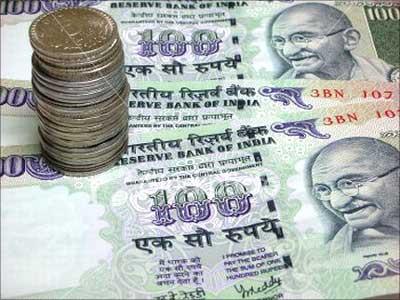 | « Back to article | Print this article |
How the FM plans to curb rising prices
Last updated on: March 1, 2011 11:29 IST
If there is a single issue which has proved to be an over-riding factor in the formation of this year's budget, it is inflation. Almost everything that the finance minister has done, and not done, can be explained by that one issue. Consider the following. This is the sharpest fiscal correction that any government has attempted in the two decades since 1991. Don't go by the headline numbers of 5.1 per cent fiscal deficit for this year and 4.6 per cent for the next.
Click NEXT to read on . . .
How the FM plans to curb rising prices
Last updated on: March 1, 2011 11:29 IST
Buried within the 5.1 per cent figure for this year is the bonus money from the auction of spectrum for both third-generation telecom services (3G) and broadband wireless. Take that "one-time" gift away and this year's deficit would settle at 6.2 per cent or more. To try to come down from that height to 4.6 per cent in one year is heroic indeed. Since this government has under-performed on fiscal correction so far, the only explanation is that it recognises its own role in adding to the problem of inflation; and it no longer wants a loose fiscal policy to add to the problems of the monetary authority as it tries to bring prices under control. Click NEXT to read on . . .
How the FM plans to curb rising prices
Last updated on: March 1, 2011 11:29 IST
Take a look then at the expenditure numbers. Next year's total government expenditure is budgeted to be only 3 per cent more than in this year; that is in sharp contrast with the 19 per cent increase in expenditure this year. It also compares with about 4.6 per cent inflation anticipated for next year; so, in inflation-adjusted terms, government spending will have shrunk. Can anyone recall the last time this happened? In other words, don't get taken in by all the big spending hikes that Mr Mukherjee announced during his rambling budget speech; the sum total of expenditure has been severely curtailed. Click NEXT to read on . . .
How the FM plans to curb rising prices
Last updated on: March 1, 2011 11:29 IST
The skeptics would argue that these are still only plans for next year, and that one must wait for the reality. Of course, but you can see what the intention is: to sharply rein in government spending.The changes, and the absence of changes, in tax rates buttress the point. Mr Mukherjee has caused mild surprise by not raising the rates of excise and service tax from 10 per cent to 12 per cent (which would have taken them back to the level that prevailed before the slowdown of 2008). The fact is that he would have been completely justified in reverting to 12 per cent since the economy is said to be once again chugging along at 9 per cent annual growth. Click NEXT to read on . . .
How the FM plans to curb rising prices
Last updated on: March 1, 2011 11:29 IST
The only plausible reason for staying his hand can be that the finance minister did not want to add to cost-push inflation by jacking up indirect taxes that would have been passed on to consumers. The relief given to those paying income tax, and the fact that it is focused on benefiting most those at the bottom of the tax-paying ladder, is of a piece with this.
The government is admitting that inflation has eaten into real incomes, and is compensating by raising the tax exemption limit. Not by enough, some might say, but you can see where Mr Mukherjee is coming from.Click NEXT to read on . . .
How the FM plans to curb rising prices
Last updated on: March 1, 2011 11:29 IST
Flowing from the general restraint on expenditure is the tight control on the government's programme for borrowing in the money market for financing the deficit. Next year's borrowing programme is Rs 3.43 trillion, up only fractionally from Rs 3.35 trillion this year, but lower than the Rs 3.98 trillion last year. This means that the government will not be pre-empting financial resources in the same way as before, that there will be more money available for private borrowers, and that there will be more liquidity in the money market. This makes the Reserve Bank's job easier because it has more elbow room to play around with interest rates as demanded by the inflation situation. Click NEXT to read on . . .
How the FM plans to curb rising prices
Last updated on: March 1, 2011 11:29 IST
The final bit of proof for the anti-inflation thrust of the budget is the fact that the government expects its scheme to work, and for inflation next year to average no more than 4.6 per cent (the difference between 9 per cent real growth and 14 per cent nominal growth). That is lower than the long-term inflation rate for India. To be sure, this calculation could be undone by a sustained increase in petroleum prices, but a close observer of the world oil market argues that much of the recent oil price spurt has been caused by speculative activity that he says is unsustainable. Click NEXT to read on . . .
How the FM plans to curb rising prices
Last updated on: March 1, 2011 11:29 IST
The combination of high open interest and high carrying cost should mean that the speculators will have to unwind their positions before long, and this would mean moderation in prices. The subsidiary point about budget 2011 is that it once again underlines the central role of rapid economic growth in solving many economic problems, including taking care of the aam aadmi. Click NEXT to read on . . .
How the FM plans to curb rising prices
Last updated on: March 1, 2011 11:29 IST
The finance minister has not raised any fresh taxes (net) in his budget, but tax revenue is expected to increase 18.5 per cent - in a year when nominal GDP growth (i.e. real growth plus inflation) is expected to be 14 per cent. This is on top of 26 per cent growth in tax revenue this year, when nominal GDP growth is expected to be 20.3 per cent. In both years, growth in tax revenue has outperformed GDP growth by about 30 per cent. Click NEXT to read on . . .
How the FM plans to curb rising prices
Last updated on: March 1, 2011 11:29 IST
Rapid economic growth therefore gives governments the elbow room to move to a sustainable level of fiscal deficit, to reduce the debt-to-GDP ratio, and thereby to get to a healthy fiscal situation - while simultaneously undertaking fiscal transfers from rich to poor through social welfare programmes of the kind that the UPA government has made its hallmark. So, it is a pity that the civil society activists who argue the strongest for expansive fiscal transfer programmes also mock the economic growth and tax policies that make it possible to give them what they want.
